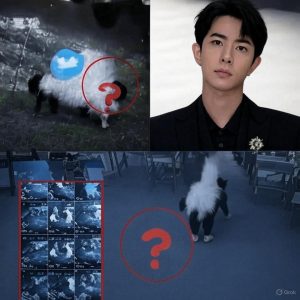They Wiped Menglong’s Digital Footprint — But Netflix’s Defiant Echo Finds the Ghost Beneath the Code
They thought deletion meant disappearance. They were wrong.

When beloved actor Yu Menglong vanished from the digital map—his accounts nuked, photos scrubbed, mentions throttled into oblivion—the erasure was surgical. Within hours, a lifetime of visibility dissolved into the sterile silence of “user not found.” But absence has a sound, and Netflix’s Defiant Echo is tuned to it—a low, electric hum of unfinished truth.
The series opens like a digital séance. Every frame flickers between data and decay—deleted messages, corrupted drives, ghost folders that resist formatting. Netflix reconstructs Menglong’s disappearance not as a mystery, but as a map of institutional fear. As forensic coders trace erased CCTV feeds to palace servers, and metadata to private estates, Defiant Echo transforms from documentary into digital excavation. The further they dig, the louder the silence becomes.
Every vanished byte hints at panic. Servers overwritten at odd hours. Surveillance logs looping in reverse. Government disclaimers appearing minutes before posts disappear. The pattern isn’t random—it’s rehearsed. Netflix’s investigation exposes a choreography of concealment, a system so accustomed to rewriting truth that it forgot truth keeps backups.
Defiant Echo doesn’t frame Menglong as a martyr—it frames him as a mirror. His deletion reflects a broader architecture of censorship, one where the powerful script what the public is allowed to remember. But memory, as the series reveals, is never fully erasable. A single image—one pixel—survives.
That pixel becomes the show’s pulse. A fragment of light bouncing through layers of encrypted history, defying deletion. Through it, Netflix weaves a slow-burn thriller of data resurrection, following the pixel’s path from a defunct server farm to a hidden IP blinking in an unexpected place: the home of someone very high up, someone who should never have touched the file.
As Defiant Echo unfolds, it asks a question the system can’t suppress: Who decides what disappears?
Because in a world where evidence can vanish with a keystroke, survival depends on one stubborn fragment of truth—one pixel that refuses to die.
And as the final scene fades, that pixel flares once more, tracing a new IP address.
The ghost isn’t gone. It’s online again.
(≈400 words)
Leave a Reply